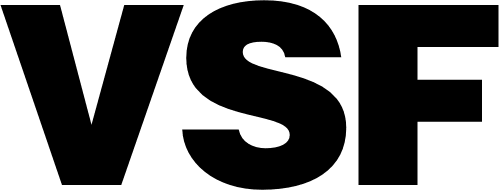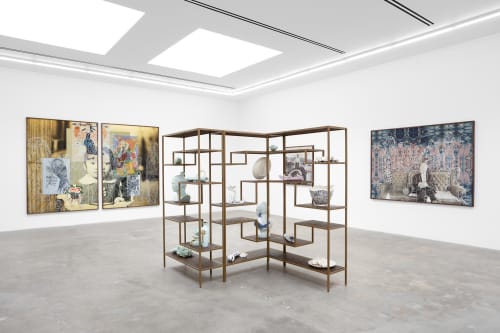VSF is pleased to present citizen, not barbarian, Kyungmi Shin’s first exhibition with the gallery. Shin’s exhibition explores her family’s histories, identities and migrations by interrogating global colonialism, its relationship to and effect on the multiple languages that frame who we are, how we see and what we know.
The exhibition title is a quote from Edouard Glissant’s “Poetics of Relation” where he describes the otherness and its internal and external positionality beyond how it’s understood through a Western lens that orders and sustains systematic hierarchies. Glissant focuses on opacity – a lack of transparency for and toward the other – that can “coexist and converge, weaving fabrics. To understand these truly one must focus on the texture of the weave and not on the nature of its components.” Looking at the “Other” as a citizen and not a barbarian.
Shin’s work asks a myriad of potent questions surrounding the complex entanglement between faith, positions of power, and the exchange (and mutation) of cultural and intellectual capital between the east and the west. At the center of this work is her parents’ backgrounds as Korean Christians, who immigrated to San Jose, California from South Korea with Kyungmi and her family when the artist was 19. Shin is interested in the ways Christianity was used as a tool of colonization, spread across parts of the Global South to claim territory and sanction the theft of peoples’ land and livelihoods, as well as the suppression and erasure of their epistemologies.
With a focus on opacity, Shin intervenes in layers of paintings and prints to reveal the cultural confluences and exchanges that occurred as a result of imperialism. Notably, Christianity itself was first introduced to Korea in the late 18th century by Western missionaries—a history in some ways echoed by the immigration story of Kyungmi’s father, who continued to preach as a Christian minister and share his faith in the United States after arriving in California.
These layers are embodied in the physical way Shin creates her works. She begins with archival images— photographs from the artist’s own family archive, Korean shaman paintings, chinoiserie artworks , and depictions of Asian women in paintings by Gauguin and Ingres—which she layers digitally. The images sourced from various archives are overlapped and printed as archival pigment prints, on which the artist paints over. The line painting disrupts and merges the various visual source materials at play in Shin’s work, as both an invitation and a challenge that confirms the complexities of intersectionality and integration of visual languages and meaning. No singular part of history happens in isolation, or in a vacuum—a truth enacted by Shin’s textured, interwoven images.
In her catalogue essay on Kyungmi Shin’s practice, jill moniz writes, “The sublime is found in interstitial spaces Shin formally and physically creates to situate and juxtapose the duality of lived experience with theoretical/historical discourse. Her mastery as a painter allows them to be suspended in the same liminal plane, even while we understand that dominant cultures like the west and Christianity hierarchically considers its meanings and narratives as more accurate and important. What she offers us is the opportunity to unpack the nexus of contact, engagement and ownership that visual language permits when naming and telling are hard to do.” Shin brings this vital new imagery into the public discourse as a counter- narrative to disrupt, refuse and reimagine the stories we tell ourselves about the convergence of our identities with history writ large. The engaging, instructive and aesthetically powerful works presented here herald a sea change to view people not as barbarians, but as citizens.
_
Kyungmi Shin (lives and works in Los Angeles) is a visual artist working with painting, sculpture, and photography. She received MFA from UC Berkeley in 1995. Her works have been exhibited at Orange County Museum of Art, California; The Berkeley Art Museum, California; Art Sonje Center, Seoul; Japanese American National Art Museum, Los Angeles; and Torrance Art Museum, California. The artist received numerous grants including California Community Foundation Grant, Durfee Grant, Pasadena City Individual Artist Fellowship and Los Angeles Cultural Affairs Artist in Residence Grants. Her work is part of the permanent collections at the Getty Center, Los Angeles and the Berkeley Art Museum and Pacific Film Archive, California. She has completed over 20 public artworks, and her most recent public video sculpture was installed at the Netflix headquarters in Hollywood, California in 2018.


